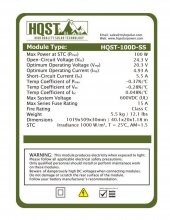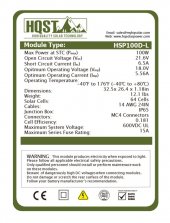Hello everyone. I am getting ready to order 4 panels for a camper setup and have decided on HQST panels based on reviews and price. They have two different 100W mono panels that have different dimensions, one is 20" x 42" and the other is 26" x 32". The shorter/taller panel has higher operating and short circuit volts but less operating and short circuit current than the other panel. Either panel will work with my setup but I'm wondering if I will get better output with one based in their output.
Thanks for any light you can shed on this.
Thanks for any light you can shed on this.




